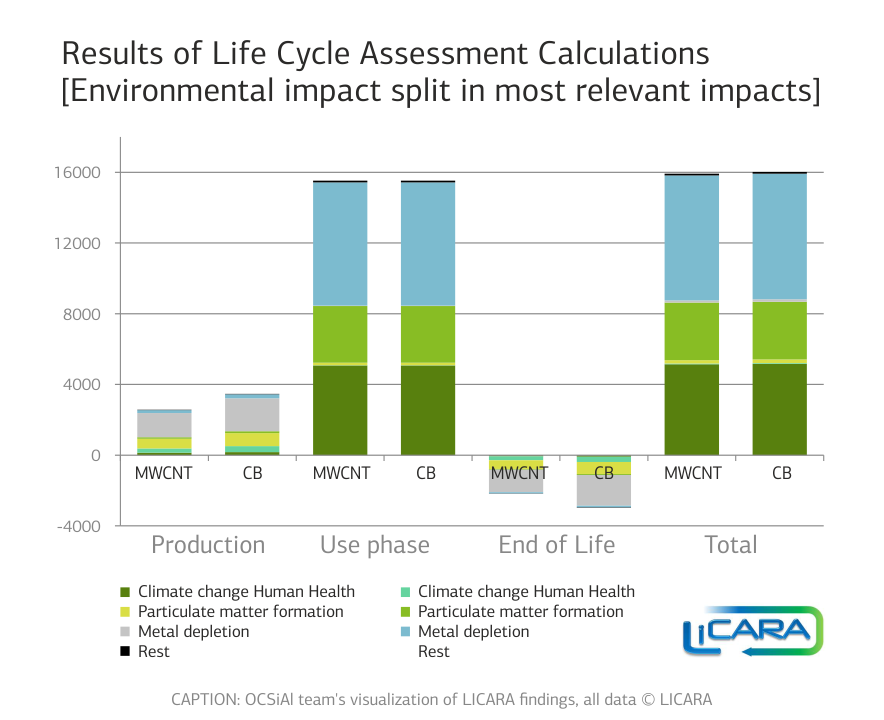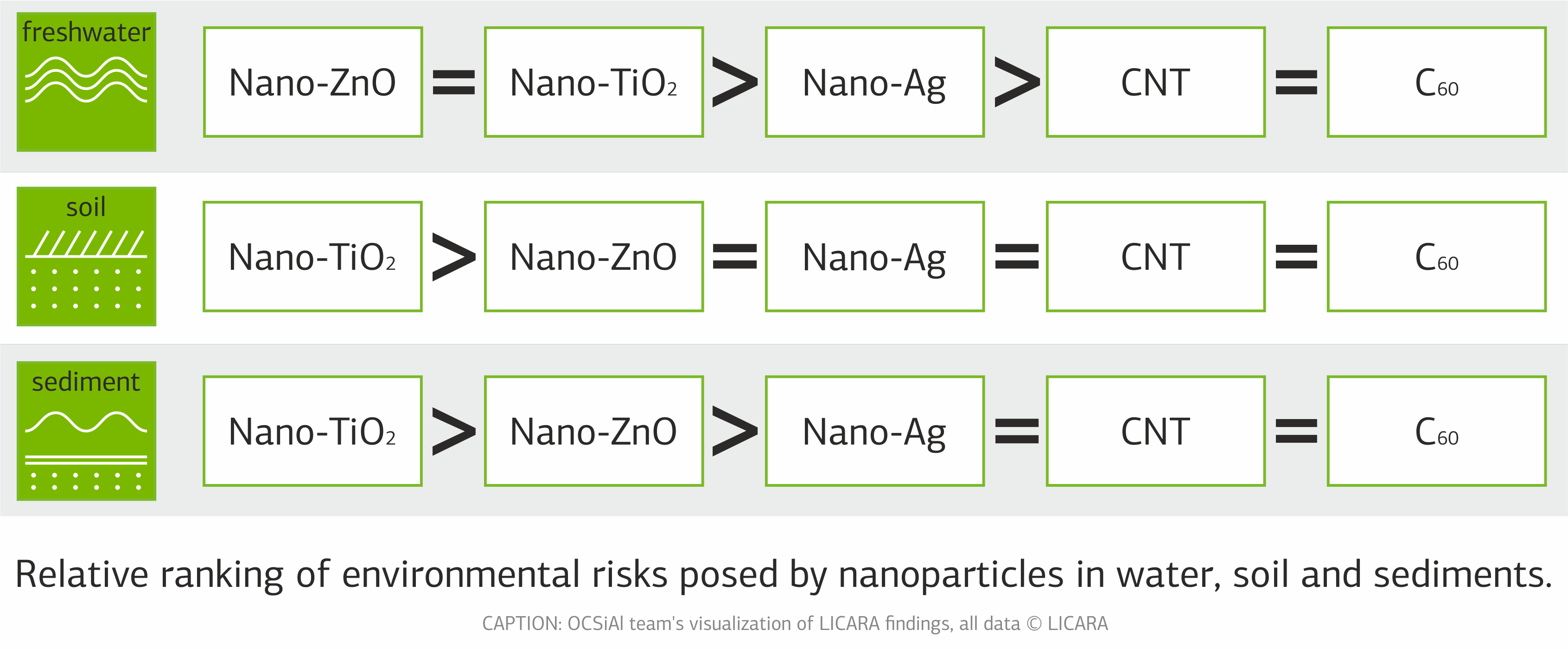Nanomaterials are often listed among future green
technologies. One of the reasons for this is that their production and
application can directly and indirectly influence (read: reduce) CO2 emissions
(by decreasing the overall material needed to achieve the same properties),
which are the main source of concern for todays’ ecologists. Yet, other effects
they could have on environment and human health are still being researched.
Organizations like LICARA , a nanomaterial risk assessment research project, are constantly gathering data in order to study all the possible effects nanomaterials could have, including human and environmental risks, and compare these risks to the benefits of using nanomaterials. Their recent research shows that overall CNTs pose no additional risk to the environment when compared against technologies and materials they can displace, and in many cases even reduce the overall risk.
The researchers recently studied the use of carbon black compared to CNTs in PEM fuel cells and showed that: "Reduced cost, resulting from increased catalyst utilization and/or catalyst stability, is highly desirable and this can be achieved by the use of carbon nanotubes (CNTs). CNTs have shown to be more corrosion resistant than carbon black under simulated fuel cell operation conditions and along with their high electronic conductivity and high specific surface area makes them attractive candidates for use as support materials in fuel cells."

In other research , LICARA determined the relative risks of nanoparticles in water, soil and sediments, showing that CNTs are at the lowest end of the risk spectrum. They found that while there are potential or small risks associated with other nanomaterials, "In general, the environmental riskposed by carbon-containing nanomaterials (carbon nanotubes and fullerenes) is zero in all compartments."

Though nanotechnologies are only now making their first steps into real-life applications and products, we believe that the envisioned future is enabled only by nanotechnology adoption at every level, from antibacterial hospital door handles to next generation fuel cells. The safety and risk analysis reports are encouraging as they show that we can embrace the future of advanced materials while also increasing our safety.
Further reading:
Facade paintings, there is no risk of nano-dust danger ;
Nanoparticles in medicine: some issues still need a solution .
